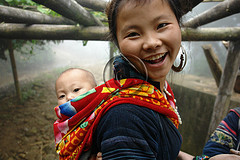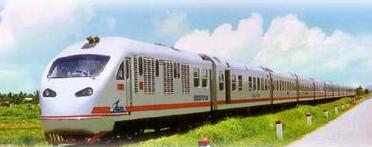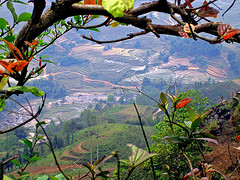Why Booking Hanoi Sapa & Sapa Hanoi Train Tickets with Sapa Train.Com ?
 Best Price comparing with other train service companies
Best Price comparing with other train service companies
 Secure your booking train tickets in advance without asking any deposit or paying in advance
Secure your booking train tickets in advance without asking any deposit or paying in advance
 Ticket payment just be done on arrival at our office located in the old quarter - 78a Đ. Trần Nhật Duật, Đồng Xuân, Hoàn Kiếm, Hà Nội
Ticket payment just be done on arrival at our office located in the old quarter - 78a Đ. Trần Nhật Duật, Đồng Xuân, Hoàn Kiếm, Hà Nội
 free bathroom, waiting lobby, safe luggage storage in Hanoi before you go to station for overnight train
free bathroom, waiting lobby, safe luggage storage in Hanoi before you go to station for overnight train
 Help you to catch taxi or motorbike to train station to Sapa
Help you to catch taxi or motorbike to train station to Sapa
Sapa Vietnam,The best way to Explore Sapa is By Night Train .You can book it though Sapatrain.com . Sapa is the most popular place to go in the Far Northwest amongst budget travelers and packages tourists alike. By using Sapa as a base you can hike off to more remote ‘traditional’ hill tribe villages and sometimes you will be offered a bed in a village for the night. Sapa was originally built as a hill station in the early part of this century and, in winter, gets bitterly cold. If you are going to be visiting Sapa in winter do not forget the winter woollies.
Sapa is preparing itself for the continuing tourist boom considerably well. Behind Sapa, towards Phong Tho is a high pass forming part of the Hoang Lien Mountains that were known to the French as the Tonkinese Alps. This range includes Fansipan, the highest mountain in Vietnam at 3,143m, which view at dawn could be spectacular .. More Read






Sapa weather and climate information – the best time to travel to Sapa. The climate of Sapa is highly seasonal, with a subtropical climate in the summer and a temperate climate during the winter. Average temperature for Sapa town is 15.4ºC, with a maximum of 29.4ºC and a minimum of 1ºC.
Sapa also experiences a marked wet season from May to September, with the heaviest rainfall occurring in July and August. The weather is also notorious for changing frequently and quickly. It is said that only in Sapa, one can experience many different seasons within only one day.More read of Sapa weather
Sprawling near the banks of a river, Can Cau Market is a clearly defined shantytown, packed with crude stalls covered with thatched roofs. The start of a few simple settlements can be seen high above, many of whose residents now make their weekly pilgrimage to the market. We are only 9kms from the Chinese border and some traders make the journey across from China on horseback. Unfortunately foreigners are not allowed to reciprocate this set-up, however tempting it may seem.Booking Sapa Can Cau market tour
From 7 am to lunchtime Off the beaten track. Several groups of Mong, Dao, Tay, Nung and Phu La groups can be found in this secluded mountain market. Return back by boat down the river Chay and marvel at the untouched natural beauty of the region .Booking of Coc Ly Market Tour
The Sunday market in Bac Ha is where you'll want to stock up on water buffalo, pigs and horses. Onceyou're all set, you can browse for bottles of local firewater (made from rice, cassava or corn) or handicrafts made by some of the 10 Montagnard groups living near here - Flower Hmong, Dzao, Giay (Nhang), Han (Hoa), Xa Fang, Lachi, Nung, Phula, Thai and Thulao.Bac Ha is a less crowded alternative to Sapa, and arriving midweek makes for a relaxing visit. Around 700m above sea level, the highlands around Bac Ma are somewhat warmer than Sapa. Bring ear plugs so you needn't endure the 'Voice of Vietnam' echoing from the loudspeakers at market-rousing time. Bac ha market tour



















